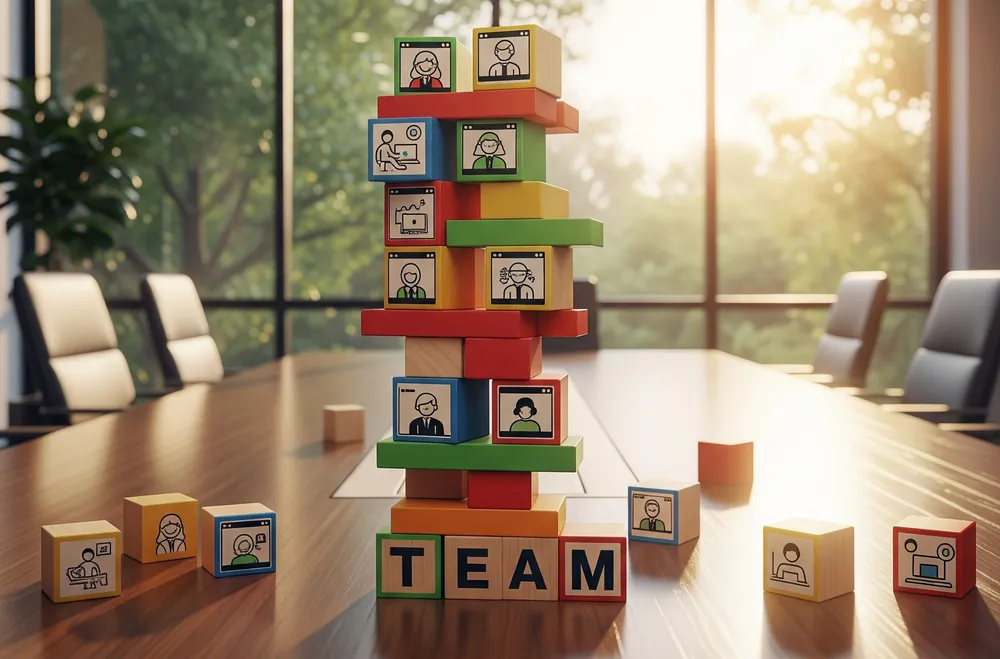Building Engineering Teams That Actually Work
-
 Nigel Browne
Nigel Browne - Jul 16, 2025

I’ve been thinking lately about what it would look like to build an engineering organization from scratch—not inheriting legacy processes or existing team dynamics, but starting fresh with everything I’ve learned from both successes and spectacular failures. Most engineering leaders inherit teams and processes, but occasionally you get the chance to build something from the ground up with intention. Here are my thoughts on what makes great, high-performing engineering teams actually work.
Start With Culture, Everything Else Follows
Culture isn’t ping pong tables and free snacks. It’s the collection of behaviors that get rewarded, the decisions that get made when nobody’s watching, and how the team responds when things go sideways.
The culture I’d build centers on three principles:
Customer obsession over feature factories. Every engineer should understand not just what they’re building, but why it matters to real people. I’ve seen too many developers get excited about elegant technical solutions that nobody actually wants to use. The best engineering teams I’ve worked with spend time with people who use their products, understand their workflows, and feel genuine ownership over solving their problems.
Autonomous teams with clear accountability. I’m philosophically opposed to micromanagement because it doesn’t scale and it drives great people away. Instead, create systems where teams can make independent decisions within clear boundaries. Give them OKRs that motivate and measure progress, then get out of their way. When people know what success looks like and have the tools to achieve it, they’ll consistently surprise you with what they accomplish.
Learning and experimentation as core competencies. The best teams have the will and freedom to experiment. Not reckless experimentation—thoughtful exploration of better ways to solve problems. This means giving people a safety net where they can propose ideas, try new approaches, and yes, sometimes fail without fear of punishment.
Build Product That People Actually Love
This might sound strange coming from someone who’s spent most of his career in manufacturing with what you’d call a “captive audience,” but I’ve learned that even internal users have choices; they can work around your system, ignore it entirely, or in extreme cases, convince leadership to buy something else.
I’ve found the most effective way to build beloved products is to live in your users’ world. Don’t just collect feature requests through support tickets, spend time watching how people actually use your software. I’ve stood in plants alongside the people using my systems, observing their workarounds, frustrations, and the tasks they’re trying to accomplish. Some of my best product decisions came from realizing we were solving the wrong problem entirely.
This user-centric approach also helps with prioritization. When you understand the real pain points, it becomes much easier to balance innovation with maintenance, new features with technical debt, and internal engineering preferences with user needs.
There’s also a powerful business advantage here: when you genuinely solve people’s problems, they become your advocates. Business leaders pay attention when their teams are actively requesting your solutions instead of complaining about IT. It’s much easier to get budget approval and organizational support when users are pulling for your technology rather than having it pushed on them.
Scale Sustainably Or Flounder in Chaos
I’ve seen teams that grew fast and teams that grew well. The difference is usually systems.
But here’s the reality check: all the great processes and culture in the world won’t help if you’re trying to do the work of a 20-person team with 2 developers. You need appropriate staffing levels for your deliverables, or you need to ruthlessly cut scope. No amount of optimization can overcome fundamental resource constraints. Sustainable scaling means building processes that work when you’re 5 people and still work when you’re 50. It means documenting not just what you do, but why you do it. It means creating career development paths so people can grow with the company instead of feeling stuck.
Remote teams add complexity here, but they’re worth it for the talent access. I’ve built and coordinated teams across multiple countries and time zones, including operations teams that reduced ticket resolution time and improved customer satisfaction scores. The key is being intentional about communication patterns, decision-making processes, and cultural integration. Different cultures have different expectations about feedback, recognition, and career development—adapt your approach accordingly.
Remote work is also most successful when you hire specifically for it. Most of my best developers have an inner drive to get things done and work independently. They’re naturally inquisitive, dive deep into problems, and communicate proactively when they need help. The best async communication tools in the world won’t help if someone needs constant direction or sits idle waiting for specific instructions. Not everyone thrives in remote environments, and that’s okay—but if you’re building a remote team, hire people who are naturally suited for autonomous work.
The secret to remote team success? Async-first communication, comprehensive documentation, and regular synchronous time for relationship building. Tools matter, but culture matters more.
Data-Driven Decisions, But Data Isn’t Everything
I’m a big believer in using data to inform decisions, but data without context is just numbers. The best engineering decisions combine quantitative analysis with qualitative understanding of the problem space.
The research behind “Accelerate” really clicked for me because it validated many practices I was already implementing, including frequent deployments, automated testing, reducing batch sizes. What it added was the framework for measuring what actually matters. I started advocating for different thinking around technical excellence and began implementing more of their recommended practices, though I’ll admit my measurement approach was still largely intuitive rather than rigorous KPI tracking but I’m committed to doing better.
The four key metrics they identify actually predict performance: deployment frequency, lead time for changes, mean time to recovery, and change failure rate. These aren’t vanity metrics—they’re predictive indicators of both technical excellence and business outcomes. With my next team, I’m eager to implement proper tracking of these metrics instead of relying on intuition alone.
Beyond tracking these key performance indicators, implement observability and monitoring not just for debugging, but for understanding how your systems actually get used. Track metrics that matter, but don’t optimize for metrics at the expense of outcomes.
OKRs are particularly valuable here because they force you to define what success looks like before you start building. John Doerr’s framework from “Measure What Matters” resonates with me: objectives should be significant and inspiring, while key results should be measurable and time-bound. But remember: OKRs should motivate the behavior you want, not just measure activity.
Automation Is Your Competitive Advantage
Nothing kills engineering velocity and developer happiness like manual drudgery. If developers are spending time on tasks that could be automated, you’re wasting your most expensive resource.
Invest heavily in CI/CD pipelines, automated testing, and deployment processes. The goal is confidence in frequent, small deployments rather than fear-driven big-bang releases. This aligns perfectly with the high-performing practices identified in “Accelerate”, teams that deploy more frequently with smaller changes have better outcomes across the board. Personal experience has shown me that when developers can ship changes quickly and safely, everything improves from feature delivery, bug fixes, team morale, to customer satisfaction.
The automation philosophy extends beyond just deployments; it also enables better work-life balance. When your systems can deploy themselves, your team doesn’t need to work weekends. When monitoring and alerting are effective, people can sleep peacefully knowing they’ll be notified if something needs attention.
Build observability into everything from day one. You want to understand not just what broke, but how the system is being used, where performance bottlenecks exist, and what changes actually improve user experience.
Balance Innovation With Technical Debt
This is where many engineering teams struggle. Too much focus on innovation and your systems become unmaintainable. Too much focus on maintenance and you lose competitive advantage.
I think the key is making technical debt visible and quantifiable. Track it, prioritize it, and allocate time to address it systematically. Don’t let it accumulate until it becomes an emergency.
Similarly, innovation should be purposeful. Experiment with new technologies that solve real problems, not just because they’re interesting. Every new tool or framework adds complexity—make sure the benefits justify the costs.
The Organizational Design That Makes It All Work
None of this happens by accident. You need organizational structures that reinforce the behaviors you want.
Cross-functional teams that own features end-to-end work better than functional silos. Give teams everything they need to deliver value, including developers, designers, product thinking, and a genuine customer connection.
Create clear career paths for both individual contributors and managers. Not everyone wants to manage people, and that’s fine. Senior technical contributors who can architect systems and mentor others are incredibly valuable.
I learned this lesson the hard way—I tried to implement a technical career ladder about six years ago and couldn’t get buy-in from HR or senior leadership. It was frustrating to watch talented engineers feel like management was their only path forward, and we lost excellent people because they couldn’t advance in title or compensation without becoming managers. I was grateful when our Fellows program (experienced engineers who get nominated into leadership roles) was able to make progress on this. We haven’t seen the full results yet, but having multiple advancement paths is finally becoming a reality. Sometimes good ideas need the right champions and timing, and sometimes that champion isn’t you.
Build redundancy into critical knowledge areas. If only one person understands a critical system, you have a single point of failure that’s risky for both the business and that individual. Knowledge transfer isn’t just documentation; it’s pairing, mentoring, and systematic skill development.
Leadership That Scales
As teams grow, your role as a leader shifts from doing the work to enabling others to do great work. This means becoming excellent at hiring, mentoring, and removing obstacles.
But here’s something I’ve been reflecting on lately: high-performing leaders create high-performing teams. You can’t truly be a high-performance leader if your team isn’t reaching their highest potential. The real measure of leadership effectiveness isn’t your individual output, it’s whether you’re multiplying the capabilities of everyone around you.
This reframes everything. Instead of asking “How can I deliver more?” the question becomes “How can I help each person on my team reach their highest level of performance?” It’s about creating conditions where people surprise themselves with what they can accomplish.
In practice, this means being intentional about every aspect of team building. Hire for potential and cultural fit as much as current skill level. Skills can be taught, but curiosity, integrity, and collaborative mindset are much harder to develop.
Invest in developing other leaders within your team. The most sustainable organizations are the ones where leadership capabilities are distributed, not concentrated in a few people.
Making It Real
Building great engineering teams is ultimately about creating an environment where talented people can do the best work of their careers while solving meaningful problems for real customers.
It requires systems thinking—understanding how culture, processes, technology choices, and organizational design all interact. It requires patience, since culture and capabilities develop over time, not overnight. And it requires continuous learning and adaptation as the team and the business evolve.
The teams that get this right don’t just ship software—they build products that customers love, create fulfilling careers for their team members, and deliver sustainable business value. That’s the kind of engineering organization worth building.
What’s your experience building or being part of high-performing engineering teams? I’d love to hear what worked (and what didn’t) in your context. Reach out at [email protected].


